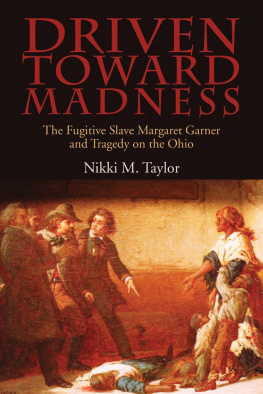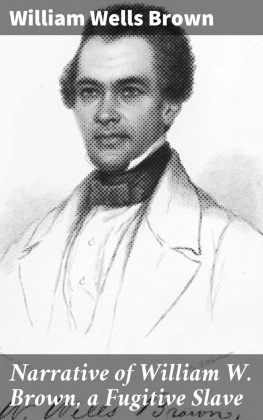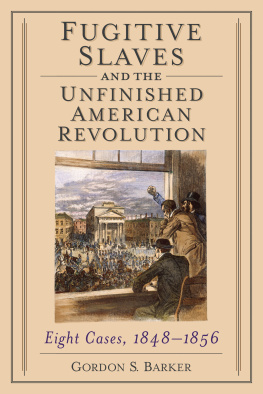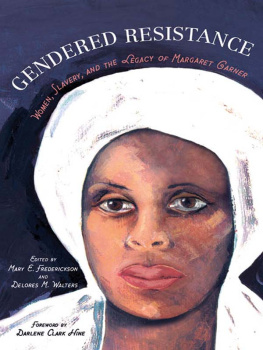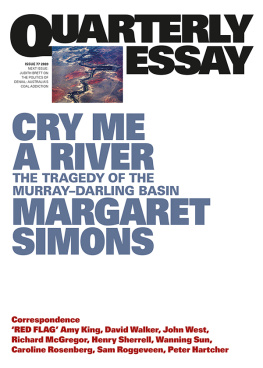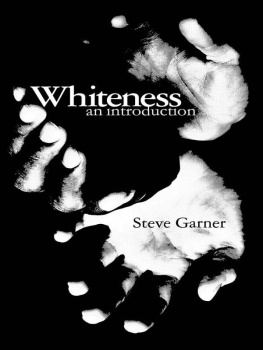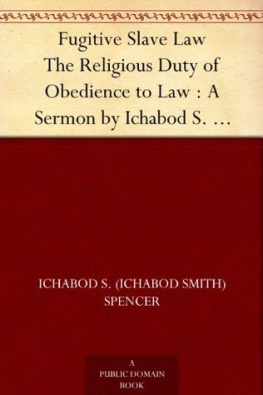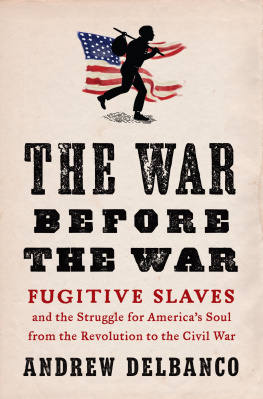Ohio University Press, Athens, Ohio 45701
ohioswallow.com
2016 by Ohio University Press
All rights reserved
To obtain permission to quote, reprint, or otherwise reproduce or distribute material from Ohio University Press publications, please contact our rights and permissions department at (740) 593-1154 or (740) 593-4536 (fax).
Printed in the United States of America
Ohio University Press books are printed on acid-free paper

Cover credit: Thomas Satterwhite Noble, The Modern Medea (1867).
From the Collection of the National Underground Railroad Freedom Center.
27 26 25 24 23 22 21 20 19 18 17 16 5 4 3 2 1
Library of Congress Cataloging-in-Publication Data
Names: Taylor, Nikki Marie, 1972 author.
Title: Driven toward madness : the fugitive slave Margaret Garner and tragedy on the Ohio / Nikki M. Taylor.
Description: Athens : Ohio University Press, 2016. | Series: New approaches to midwestern studies | Includes bibliographical references and index.
Identifiers: LCCN 2016041893| ISBN 9780821421598 (hc : alk. paper) | ISBN 9780821421604 (pb : alk. paper) | ISBN 9780821445860 (pdf)
Subjects: LCSH: Garner, Margaret, 18341858. | Fugitive slavesKentuckyBiography. | Fugitive slavesLegal status, laws, etc.United States. | Fugitive slavesLegal status, laws, etc.OhioCincinnati. | Garner, Margaret, 18341858Trials, litigation, etc. | InfanticideOhioCincinnatiCase studies.
Classification: LCC E450.G225 T39 2016 | DDC 306.3/62092 [B]dc23
LC record available at https://lccn.loc.gov/2016041893
SERIES EDITORS PREFACE
For much of American history the term Midwest evoked images of endless fields of grain, flat, treeless landscapes, and homogenized populations in small towns. Most Americans hear Midwest and think of corn, wheat, soybeans, massive feedlots, huge pig farms, and countless dairy herds. The cinematic Midwest was River City, Iowa, in The Music Man; Dorothy trying to escape Oz and get back to Kansas; the iconic power of small-town basketball portrayed in Hoosiers; or a mythical baseball diamond in rural Iowa in Field of Dreams. In the late twentieth century, images of deindustrialization and decay linked the region to a new identity as the nations Rust Belt. For too many Americans, the Midwest has been flyover country.
This book series explores regional identity in the nations past through the lens of the American Midwest. Stereotypical images of the region ignore the complexity and vibrancy of the region, as well as the vital role it has playedand continues to playin the nations economy, politics, and social history. In the antebellum and Civil War periods the Midwest was home to virulent racist opponents of black rights and black migration but also to a vibrant antislavery movement, the vigorous and often successful Underground Railroad, and the political and military leadership that brought an end to slavery and reframed the Constitution to provide at least formal racial equality. A midwestern president issued the Emancipation Proclamation, and midwestern generals led the armies that defeated the southern slaveocracy. Midwestern politicians authored the Thirteenth Amendment ending slavery and the Fourteenth Amendment mandating legal equality for all Americans. The political impact of the region is exemplified by the fact that from 1860 to 1932 only two elected presidents (Grover Cleveland and Woodrow Wilson) were not from the Midwest. Significantly, from 1864 until the 1930s every Chief Justice but one was also a midwesterner.
Much of the history of the Midwest has been about race. The political or cultural Midwest began with the passage of the Northwest Ordinance in 1787, which provided for a system of government and land distribution for the territories north and west of the Ohio Riverpresent-day Ohio, Indiana, Illinois, Michigan, Wisconsin, and part of Minnesota. The Ordinance established the process of turning territories into states, but it is most remembered for Article VI, added at the last minute, banning slavery in the Northwest Territory. The antislavery article of the Ordinance was less effective than its authors anticipated. Perhaps a thousand or so slaves already lived in the Territory, mostly in what is today southern Indiana or southern Illinois. Thanks to proslavery interpretations of the Ordinance and stubborn persistence by the slave owners in the Territory, most of these people were held in bondage until the early nineteenth century, and some remained in servitude until the 1840s.
Even when they were no longer in bondage, African Americans endured discriminatory laws that made their settlement in the region difficult. In Ohio there was never any slavery or long-term indentured servitude, as there was in Indiana and Illinois. But blacks in the Buckeye State could not vote, serve on juries, or before 1849 even expect to attend a public school. Yet, despite this discrimination, free blacks and fugitive slaves poured into Ohio from the moment of statehood in 1803 until the Civil War. In 1803 there were fewer than 500 blacks in the state. By 1810 there were more than 2,000, and by 1830 the population was almost 10,000. The federal census found more than 25,000 African Americans in 1850 and more than 36,000 on the eve of the Civil War. The real number was certainly larger, because fugitive slaves entering the state did their best not be counted or even noticed by government officials.
By 1850 Ohio also had a strong and vibrant antislavery community. Opponents of slavery, like Joshua R. Giddings, Benjamin F. Wade, James Ashley, John Bingham, and most important of all, Salmon P. Chase, held state offices and represented the state in the House of Representatives and the Senate. Antislavery lawyers fought to protect fugitive slaves, and some whites pushed for increasing black rights. Racism was still common, and blacks suffered discrimination in many ways, but at the same time, one of the few integrated colleges in the country was in Oberlin, and at least one African American, John Mercer Langston, was elected to public office, even though blacks were prohibited from voting.
The Ohio River marked the boundary between slavery and freedom for thousands of African Americans who crossed the river to escape bondage. Many successfully made the transition from southern slavery to northern liberty, even if they did not have full equality. Ohio was a beacon for slaves who wanted to own themselves.
Nikki M. Taylor tells the story of a family of Kentucky slaves who saw Ohio as just such a beacon of freedom. The family managed to escape across the Ohio River, only to be captured in Cincinnati. What happened next was a tragic moment in American history. Rather than let her children be returned to bondage, their mother, Margaret Garner, attacked her offspring, managing to kill one of her children before being stopped. The incident incited sectional controversy. Southerners argued that only a crazy woman would kill her own children. Some northerners agreed, but others realized that the evils of slavery might drive a mother to do what was unspeakable: murder her own child. Was Margaret Garner insane or evil? Or was she rational in thinking that death was better than bondage? Had slavery driven her to madness, or was she reacting logically to the events of the moment, in a small house in Cincinnati, as slave catchers and law enforcement officials from Ohio tried to capture her and her family? This is the story that Nikki Taylor offers us.


